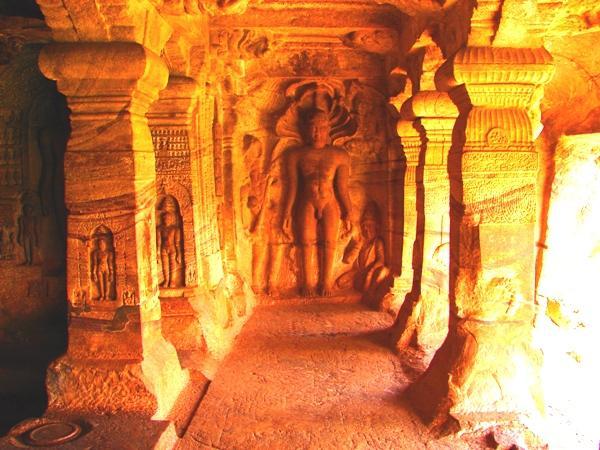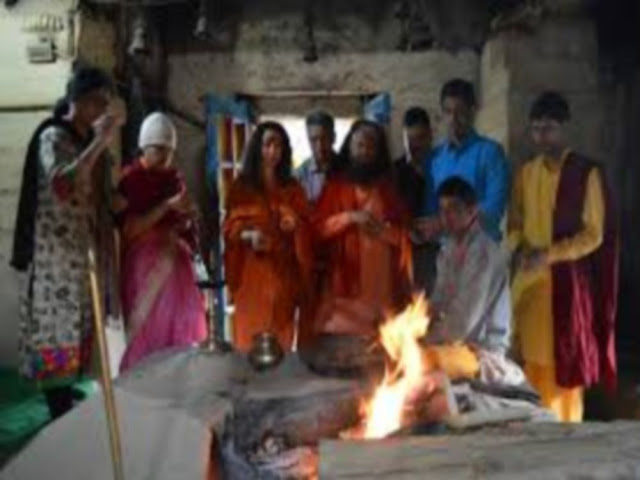We have learnt in Indian History that Temples in Ancient Times were once Social Hubs where people congregated. They were also sites where the Arts of Dance, Music and Combat were honed and have been passed down for Generations. Today, These Temples remind us of our past and the Architectural Brilliance of Craftsmen in those days.
1. Brihadeshwara Temple, Tanjore, Tamil Nadu
Built by King Rajaraja Chola in 1002 AD, this Temple was dedicated to God Shiv and is the finest example of Dravidian Art. The Brihadeshwara Temple combines the best in the Tradition of Temple Building - Architecture, Sculpture, Painting and other Allied Arts. It is composed of many interconnected Structures such as the Nandi Pavilion, a Pillared Portico and a Large Hall. Its Vimana (the Roof like Structure that Towers above the Sanctum Sanctorum or Main Shrine) is 66 metres high.
2. Kailashnath Temple, Ellora
This was built as a Dedication to God Shiv, The Destroyer. It is a tribute to man's greatness, even though academia have not given it its Due Place in our School History Syllabus. It was carved in perfect proportion and alignment to its adjacent Structures, which include Columns, Flying Bridges, Stone Arches and Statues and Buildings - all made out of a Single Piece of Rock.
3. Chennakeshava Temple, Karnataka
Situated on the banks of the Yagachi River, this Temple was an early Masterpiece of the Hoysala Period. It was built by the Vijayanagara Ruler to commemorate their Victory over the Cholas and is solely dedicated to God Vishnu as most of the figural carvings depict aspects of God Vishnu, particularly the incarnations and the God seated with Goddess Lakshmi.
4. Tugnath Temple, Uttarakhand
At an elevation of 3680 metres above Sea Level, the Tugnath Temple is the Highest Elevated of the Panch Kedar, the others are Madhya Maheshwar, Kedarnath, Rudranath and Kalpeshwar. The Temple is connected to the Ramayana where Lord Ram meditated to release the curse of Brahmahatya for having slaughtered Ravan. The Temple is quite small and hence only 10 people are allowed in at a time.
5. Adi Kumbeswarar, Tamil Nadu
Located in the Temple Town of India, Kumbha Konam, this Temple dates back to the Vijay Nagar Period. Adi Kumbeswarar is the presiding deity of the Temple and the Shrine is located in the Centre. Kumbeswarar is in the form a Lingam believed to have been made by God Shiv himself when he mixed the Nectar of Immortality and Sand.
6. Jagatpita Brahma Mandir, Pushkar, Rajasthan
Although the Structure of this Temple dates back to the 14th century, this Temple is said to be 2000 years old. The Temple is mainly built of Marble and Stone Slabs. It has a distinct Red Pinnacle and a Bird Motif. The Temple Sanctum Sanctorum holds the central images of Brahma and his Second Consort Gayatri. It witnesses a festival dedicated to Brahma during the Kartik Purnima.
7. Varadharaja Perumal Temple, Tamil Nadu
Varadharaja Perumal Temple is a Hindu Temple dedicated to Bhagwan Vishnu located in the Holy City of Kanchipuram. It is one of the Divya Desams, the 108 Temples of God Vishnu believed to have been visited by the 12 Poet Saints or Alwars. It is believed that the Lizard Sculptures that adorn the ceilings of the Temple when touched forgive The Sins of Your Past Life.
8. Konark Sun Temple, Odisha
This Temple was built by King Narasimha Deva-I of the Eastern Ganga Dynasty around AD 1250. The Temple is in the shape of a Gigantic Chariot (Rath) with elaborately carved Stone Wheels, Pillars and Walls. A major part of the structure is now in Ruins. The Temple is a UNESCO World Heritage Site.
9. Dilwara Temples near Mount Abu, Rajasthan
Located about 2.5 km from Mount Abu, each of these 5 Temples are Unique in their own way and were built between the 11th and 13th century AD and are remarkable for their Stunning Use of Marble. These 5 Temples (Vimal Vasahi, Luna Vasahi, Pittalhar Temple, Parshva Nath Temple and Mahavir Swami Temple) are considered The Most Beautiful Jain Pilgrimage sites in the World.
10. Pancha Ratna Temple, Bankura, West Bengal
Built in 1643 by King Raghunath Singha, this Temple stands on a low square plinth and consists of an ambulatory pathway with a porch opened by 3 arches on the 4-Sides of the Temple. The Walls are Richly Decorated with Terracotta Carvings featuring aspects of Lord Krishna’s Life.
11. Badami Cave Temples, Karnataka
The Badami Cave Temples are a Complex of Temples located at Badami, a town in the Bagalkot District in the northern part of Karnataka, India. They are considered an example of Indian Rock-Cut Architecture, especially Badami Chalukya Architecture.
12. Vittala Temple, Hampi, Karnataka
Perhaps one of the most popular of all the Temples in the Hampi Complex, this houses the famous Musical Pillars that have Amazing Acoustics. The British wanted to find out the reason behind this and so they cut 2 Pillars to check if there was anything inside that was Producing the Sound. They found nothing but Hollow Pillars. The road leading to the Temple was once a Market where Horses were traded. Even today we can see the ruins of the market on both the sides of the road. The Temple contains images of Foreigners like Persians Selling Horses.
13. Orchha Temples, Madhya Pradesh
Orchha is another Famous Tourist Spot located near the Famous Khajuraho Temple. The town has Chaturbhuj Temple, Lakshmi Temple and Ram Raja Temple. The Chaturbhuj Temple is imposing with tall spires built atop a high platform. Its exterior is richly ornamented with Lotus Symbols. The Raja Ram Temple resembles a palace as the Ram is worshiped as a King here. The Lakshmi Temple is an odd mixture of Temple and Fort and an Unique Mixture of Concentric Forms. It consists of an Octagonal Central Tower inside A Triangular Temple. In line with this Eccentricity, the Entrance Gate is set in a corner rather than the Wall.





























